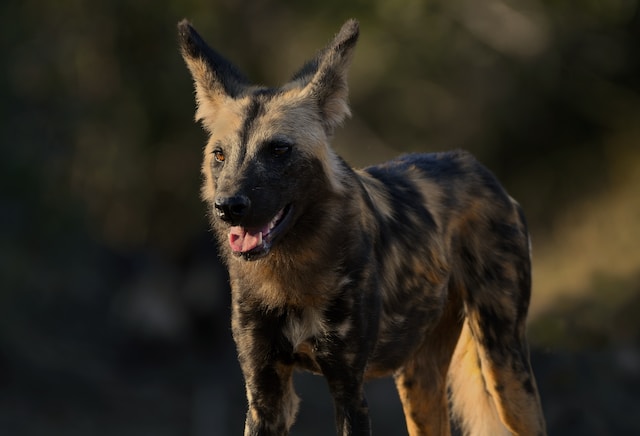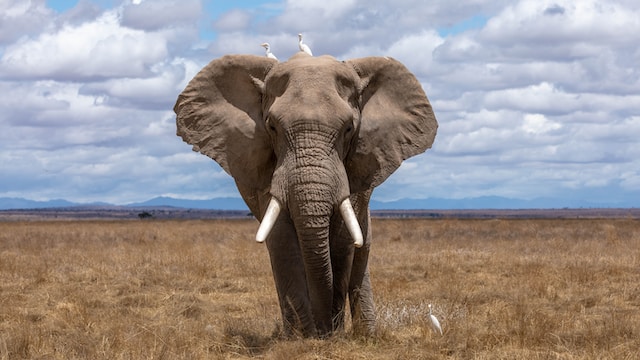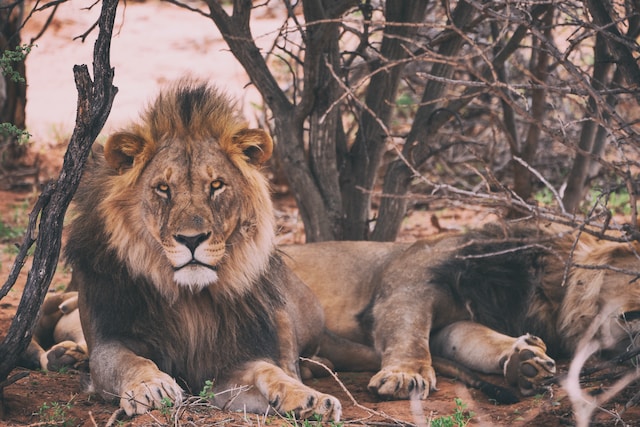If you are looking for unique yet impactful travel experiences, conservation safaris in Africa are a great place to start. These are extraordinary adventures through the diverse continent, with a focus on sustainability.
They take you through diverse habitats that are home to the rare creatures of Africa. As you tour these diverse ecosystems, you get to participate in preservation efforts.
Our collection of ecotourism destinations takes you off the beaten path and into nature’s hidden gems. Take a look:
Gorongosa National Park, Mozambique

Mozambique’s Gorongosa National Park is one of Africa’s most outstanding success stories in terms of restoration. What was once a paradise of diversity and a top safari destination lost close to 95% of its large mammals. This happened during a period of civil war that lasted about 20 years.
By the end of the war in 1992, elephants that once numbered in the thousands had dropped to 200. There were only five lions, each having three legs. Predator numbers dropped as prey populations dropped.
In 2004, US humanitarian Gregory Carr begun an extensive rehabilitation project in the abandoned park. Since then, elephants populations have risen to more than 800. There are close to 200 lions now freely roaming the area.
The park is also home to some of the world’s most endangered species. These include pangolins, wild dogs and the rare oribi antelope. There are more than 100,000 large herbivores such as impalas, kudus, bushbucks, giraffes and nyalas. Bird lovers will enjoy the high population of great white policans, southern ground hornbills and wattled crane among other aquatic species.
Visit Gorongosa between April and early December and enjoy a boat tour, game drive, biking tour or walking safari. For bird lovers, the best time to tour is between April and May.
Chinko Nature Reserve, Central African Republic

Another great destination for conservation safaris in Africa is Chinko Nature Reserve in the Central African Republic. Though it is one of the continent’s most biodiverse areas, it had lost about 95% of its wildlife as of 2002. This was the result of rampant poaching and overgrazing. It came under the management of African Parks in 2014 and in 2020, came under stringent long-term protection.
One of the most unique aspects of this area is its delicate blend of tropical forest and savannah grasslands. Both savannah and forest elephants live here, one of the only areas in the world with this combination. It is also home to the critically endangered African wild dog. Researchers have confirmed the existence of four species of the African pangolin. There are at least 100 northern lions, 6,000 African buffalo and thousands of eastern chimpanzees, bongo and eastern giant eland.
For bird lovers, Chinko is one of the best places in Africa to spot the rare and endangered black-bellied bustard. Other rare species here include the stone partridge and secretary bird.
Nkhotakota Wildlife Reserve, Malawi

Once known for its diversity in wildlife and ecosystems, Nkhotakota was a haven for a variety of species. It boasted vast savannahs, riverine forests and lush vegetation. Leopards, elephants, antelopes and various birds freely roamed its expanses. However, as a result of poaching, human-wildlife conflicts and habitat degradation, the ecological balance in the reserve suffered.
In a bid to revitalize it, the government collaborated with various organizations (such as African Parks) in a number of initiatives. One of the most prominent of these was the translocation of elephants into the reserve. The implementation of anti-poaching measures and community education followed. Restoration of degraded habitats also helped in the recovery of the area.
Currently, it ranks highly among the best destinations for conservation safaris in Africa. As the oldest and largest protected area in the country, it is home to a vast, unexploited wilderness. The wildlife population is growing and the habitat is showing signs of recovery. The best time to visit is between July and October. Enjoy canoeing, game drives, walking safaris, camping and fishing.
Liuwa Plain National Park, Zambia

Another remarkable hidden gem for conservation safaris in Africa is Liuwa Plain in Zambia. Back in its glory days, it was renowned for its antelope, zebra and blue wildebeest migration. Predators like lions, hyenas and cheetahs roamed its grasslands and open plains in search of prey. A variety of bird species lived in its wetlands.
Poaching and habitat degradation are among the challenges that led to its deterioration. At some point, it had just a single lioness, nicknamed “Lady Liuwa.” However, thanks to the efforts of African Parks and other NGOs, it has had a rebound.
The reintroduction of lions as well as buffalo and eland had great success. Lady Liuwa took a bow in 2017, but left a growing pride of lions numbering over 20. The wildebeest migration has also bounced back. It is not as big as that of the Serengeti/Maasai Mara. But it is remarkable enough to be the second largest on the continent. Better still, you can enjoy this wonder of nature without the large crowds typical of the former.
Other animals maiing a recovery in the park include the rare tsessebe, wild dog, eland, cheetahs and hyenas. Notably, 10,000 humans legally live within the park, coexisting ethically with the animals and taking care of the land.
The best time for a wildlife safari is between August and December. Photography lovers will especially appreciate the amazing views in November. Around this time, the landscape offers a striking contrast between green and golden grasslands thanks to summer rains.
Chyulu Hills, Kenya

For volcano adventure lovers, Chyulu Hills is one of the best destinations in Kenya, and Africa as a whole. It is a dramatic landscape featuring old lava flows, volcanic cones, tubes and caves. These volcanic features stand out against a background of acacia woodlands and rolling grasslands.
In its prime, the area was home to vast herds of elephants, giraffes, leopards, zebras and buffaloes. The critically endangered black rhino lives here. So does the largest Kenyan population of the critically endangered African elephants. However, deforestation, poaching and unsustainable land use posed a threat to the ecosystem’s balance.
Conservationists have since swung into action in a bid to protect and restore the habitat. They have engaged with the local community in efforts to conserve forest cover and restore the land.
The destination, which is marks the demarcation between Tsavo and Amboseli, is bouncing back. This hidden paradise now has a blanket of green where large mammals thrive. It is a favorite spot for nature lovers looking for spectacular views of Mount Kilimanjaro in neighvouring Tanzania. Enjoy a tour of Chyulu Hills anytime of year for one of the most memorable conservation safaris in Africa.
Explore Africa’s Conservation Success Stories
Destinations like these for conservation safaris in Africa are proof of what nature can do when we offer protection and restoration. They are a testament to the remarkable recovery it can achieve with sustainable practices.
For ecotourism lovers, few things can compare to the joy of witnessing these once glorious habitats rising from the ashes. It is also an opportunity to get involved in rehabilitation efforts to transform degraded landscapes to a version of their former glory.
Visit the sites of these success stories and get a firsthand feel of what life would be like if humans coexisted peacefully with the natural world.

